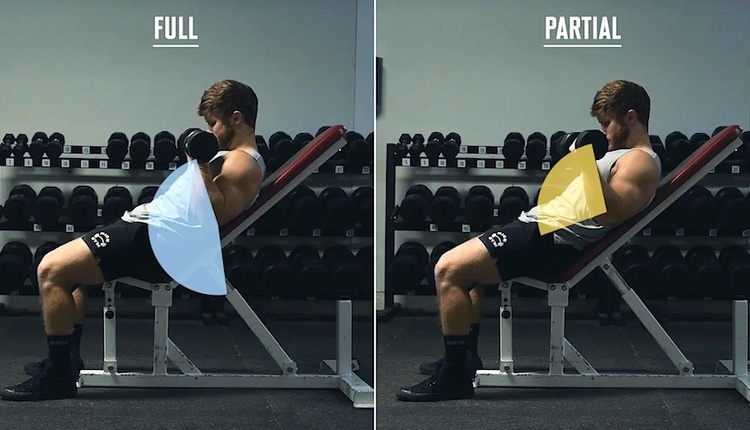
One essential practice of successful personal trainers is following the trends and state of the industry as a whole. Each year, authorities in the fitness industry, such as ACSM, IDEA Fitness, and the Health and Fitness Association, publish reports informing us of the industry's ever-changing trends.
Some trends, like wearable technologies, come in hot and stay relevant as far as the future can see, while other trends, like personal training and cardio, steadily change over time. Here, we review 10 different reports and writings about the fitness industry landscape.
The most relevant information to personal trainers was analyzed to compile a personal trainer-specific review of the most critical trends. Four key patterns emerged for personal trainers to recognize and take action on in 2025:
- Growth of hybrid training
- Wearable and AI technology
- Holistic wellness approach
- Community-driven fitness
Personal Training Is Still Growing, but Is Being Outpaced by Other Trends
Since 2007, personal training has been a top 10 trend, now expected to rank 16th in 2025. This is a dramatic drop! Factors like the growth of remote work, the emergence of AI and wearables and the popularity of virtual fitness solutions have shaped consumer preferences. To meet clients' desires for flexibility and independence, personal trainers should consider incorporating this year’s four key trends listed above into their offerings.
According to the U.S. Bureau of Labor Statistics, employment for fitness professionals (including personal trainers) is expected to grow by 15% from 2019 to 2029, much faster than the average for all occupations. Fitnessmentors.com reports the industry is growing at a rate of 8.7% per year, with the demand for personal trainers expected to grow 13% between now and 2028.
1. Growth of Online and Hybrid Training
According to ABC Trainerize, only 38% of personal trainers offer hybrid coaching, which blends in-person with virtual training. This presents a challenge, as 54% of respondents prefer online or app-based coaching for convenience and cost savings. In comparison, 41% still prefer face-to-face sessions, as they better support their need for motivation and experiential learning (Future Market Insights).
Personal trainers should recognize this need and adapt by offering some form of hybrid or online training as demand rises from clients seeking flexible options. It can be daunting to provide online options, as 57.2% of trainers reported difficulty in ABC Trainerize’s report. Some ways to take action on this are:
- Offer online sessions for clients on vacations, work trips or even for clients who move
- Provide online check-ins in between training sessions
- Offer virtual sessions on holistic health or wellness, such as helping with goal setting through behavior change
- Give online workouts to supplement in-person training
- Integrate fitness apps into in-person training and the clients’ workouts
2. Wearable Technology and AI Integration
Surprise, this trend is #1 again, as it’s had momentum for nearly a decade. Core Health and Fitness shows wearables dominate the market, with projected global revenues of $3.8 billion by 2025. Their popularity has soared as they provide real-time data, custom workout plans, and monitor progress. Wearables account for a client’s daily physiological state, optimizing workout intensity and recovery (Future Markets Insights).
In ACSM’s survey, wearable technology emerged as the leading trend for most exercise professionals, except full-time personal trainers. This group rated wearable technology considerably lower than exercise physiologists, strength and conditioning coaches and academic individuals, such as graduate students and research faculty.
Why would personal trainers rate wearables as a lower trend?
- Personal trainers depend on real-time observation and direct feedback instead of wearable data.
- They evaluate movement quality, form, and client engagement in ways that a smartwatch or fitness tracker cannot duplicate.
- Personal trainers emphasize motivation, habit development, and form correction — areas where wearables are less critical.
- Personal trainers may not want to push the extra expense over already expensive services.
Even so, personal trainers should be willing and knowledgeable about integrating their clients’ wearables into their services. There’s no doubt that we love data. It motivates us, holds us accountable and is helpful in programming. Therefore, personal trainers should familiarize themselves with wearables by using them and researching ways to incorporate them into their offerings.
3. Holistic Wellness Approach
Holistic wellness is a top trend that tells us people aren’t turning to fitness purely for the physical anymore, but recognize it as a part of their overall well-being. According to ABC Trainerize, clients seek a “360° approach” to health, integrating multiple aspects of wellness.
Personal trainers have long been viewed as professionals who’ll give you a good sweat, but consumers desire guidance on other aspects of their wellness. Personal trainers looking to stand out to clients should focus part of their continuing education on more than just exercise technique, but on:
● Health coaching
● Behavior change
● Motivational interviewing
● Networking with licensed mental health professionals and certified health coaches for anything beyond their scope
Taking advantage of this could lead to new revenue streams and ways to impact consumers positively.
4. Community-Driven Fitness and Group Training
Small group training and group classes are popular due to camaraderie, motivation, and cost-effectiveness. According to Core Health and Fitness, gyms with community and group programming have retention rates exceeding 75% because they foster social members’ connections.
Group training can provide personal trainers with a social aspect that attracts more clients while improving trainer earnings.
Fitness industry trends should be paid attention to, as they show what people want. Of the many industry reports analyzed, four key trends are especially relevant for personal trainers to be aware of if they want to stand out. Clients are seeking hybrid options, enhanced utilization of their wearable technologies, and a 360-degree approach to their wellness while being part of a community.
Brandon Hyatt, MS, CSCS, NFPT-CPT, NASM-CES, BRM, PPSC is an experienced leader, educator, and personal trainer with over 7 years of success in building high-performing fitness teams, facilities and clients. He aspires to become a kinesiology professor while continuing to grow as a professional fitness writer and inspiring speaker, sharing his expertise and passion. He has a master's degree in kinesiology from Point Loma Nazarene University. His mission is to impact countless people by empowering and leading them in their fitness journey.




















